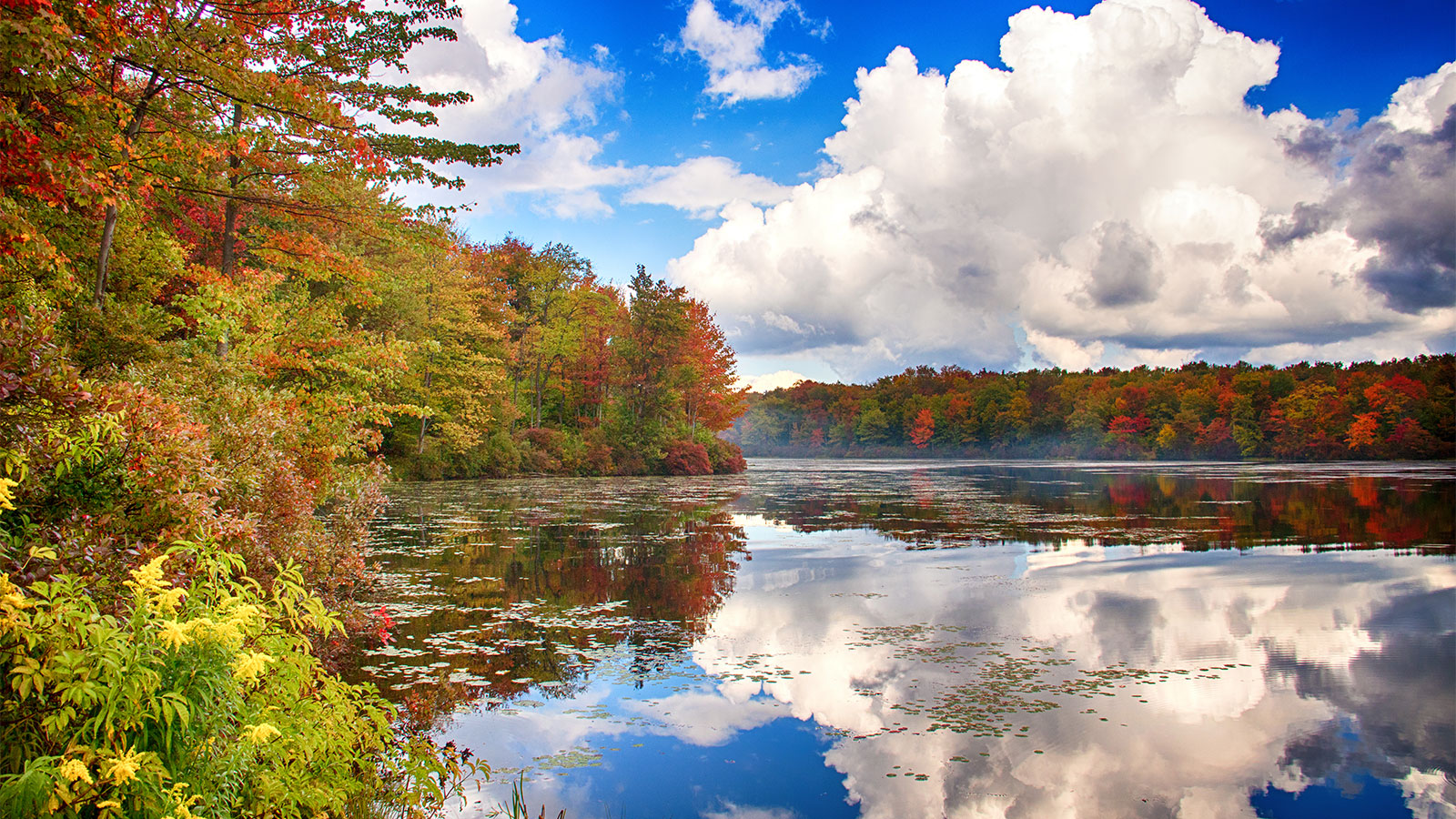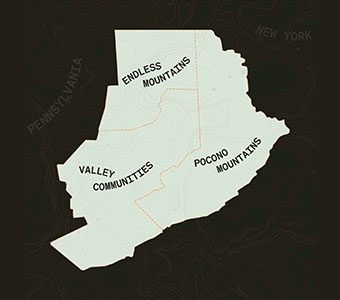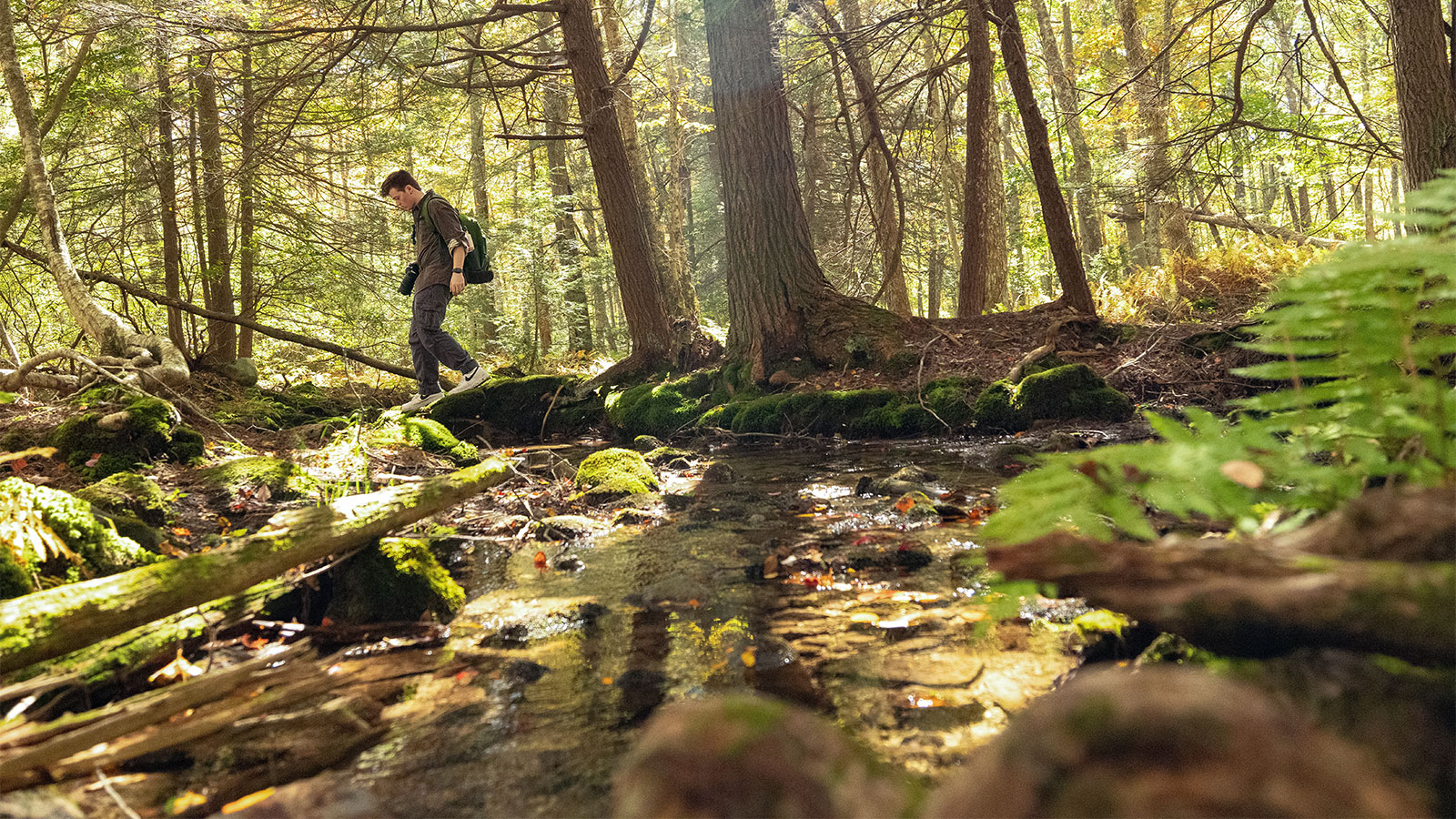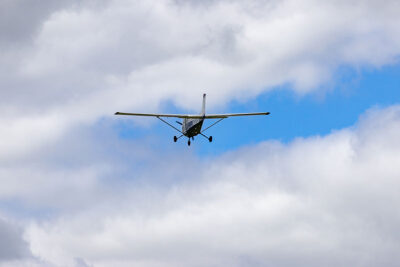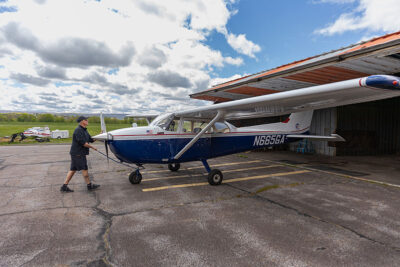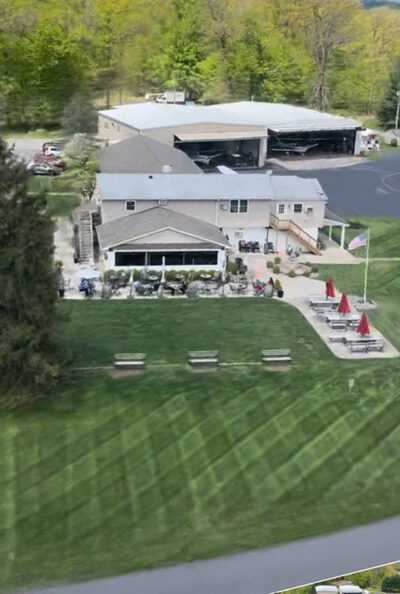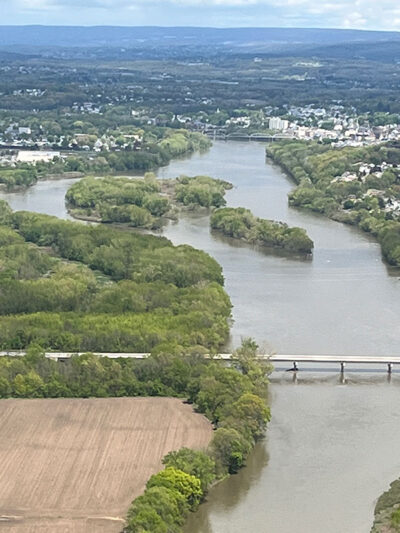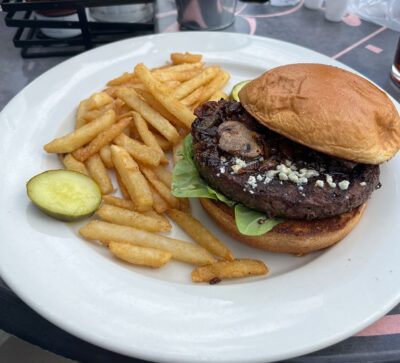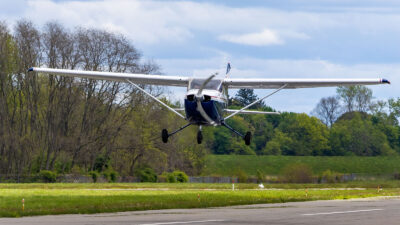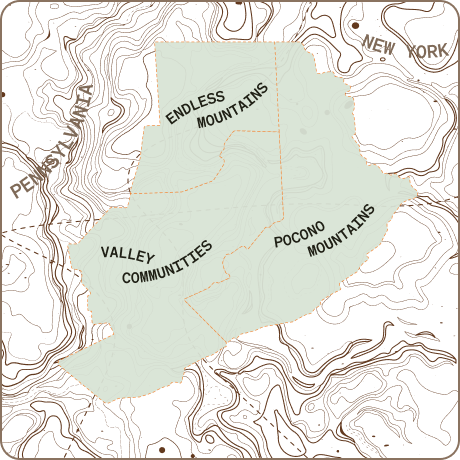Learn to Fly. Take a Scenic Flight. Try a $100 Hamburger (I’ll Explain).

Valley Aviation manages and operates the Luzerne County-owned airport and offers a popular pilot training school, scenic flights and so much more.
By all indications, this was supposed to be a routine assignment. Go to the Wyoming Valley Airport in Forty Fort. Talk to one or two flight instructors from Valley Aviation. Interview a few students. Have a look around and snap a couple shots of airplanes, hangars…etc.
Well, we did just that. It was smooth, simple and entirely ordinary. And despite all precaution, dedicated to the very notion of filing a quick, easy story, there’s always an errant thread. It sat there reaching out like an open hand. “Pull,” it seemed to whisper. “There’s a little more here.” I did. And somehow, before I could type the end punctuation for this otherwise rudimentary story, we were bumping along just below the cloud line at about 3,500 feet and crossing from the rolling hills and rivers of Northeastern Pennsylvania into the rural patchwork of Western New Jersey. All for the sake of what they call in aviation circles the $100 hamburger (I’ll explain).

That little, loose thread and the reason for our little New Jersey jaunt is Chuck Hoyt. He’s a former student in the flight school here – a local guy, 50-ish. He’s also an “airport bum” – a term rather unceremoniously applied to the assortment of private pilots, former students, hobby flyers, aircraft enthusiasts and such that typically hang out around small, general aviation airports across the country. And what, exactly, does this group of equally self-assured and self-deprecating “bums” do?
“I guess an airport bum is a person who spends the bulk of their free time at the airport because they like the atmosphere and the people,” Chuck explains. “We’ll hang out at the big table inside the office or at somebody’s hangar.” He continues, “Sometimes we’ll sit and watch airplanes, or we’ll go fly somewhere for lunch, but mostly we just sit around and solve all the world’s problems.” He cracked a wide smile.

We had only just met a few minutes ago, and already, we were piled into Chuck’s hangar, looking over his blue and white 1977 Cessna 172. “It’s basically known as the minivan of the sky,” he quipped. In its earlier years, the little plane flew under the employ of the U.S. Civil Air Patrol. It changed hands once or twice after being retired from service. And then it found Chuck. “I mean it checked all my little boxes and I was able to add some little things here and there like newer avionics and auto pilot.” He laughs. “I can go into the clouds if I want to and I’m pretty sure everything’s going to keep working.” He laughed some more. “Reasonably sure, I guess,” He added. I laughed along nervously. Soon, me, this affable airport bum and his flying minivan would be cruising the sky for burgers in New Jersey.
And we’ll get to that, I promise. But first, the airport, the people who use it and why.
Learn to Fly

You know there’s an airport there. And, like most, you just don’t know why.
The Wilkes-Barre Wyoming Valley Airport was first established in 1929 as a private airfield. Luzerne County took ownership of the 110-acre property in the 1940s. For the past few decades, locally-owned, Valley Aviation has managed the airport as the Fixed Base Operator (FBO). They maintain the runways and hangars, provide fuel service, aircraft parking and maintenance.
The family-run company also provides aircraft rentals and aerial sightseeing tours. You’ve definitely seen the small planes overhead on sunny summer or fall weekends. That’s them. And, all of that is standard, small airport stuff. But what you probably didn’t know is that Valley Aviation also runs a very successful A.O.P.A. Top 10 Flight School. Certified pilot and flight instructor, Catherine Matyas explains the impressive designation. “That means we are one of the top flight schools and it’s based on our instructors’ levels of training and the quality of our flight school training.”

Surely, they don’t just let anyone fly these things…
Catherine, at only 23, is already a commercial pilot. The Sugarloaf Twp. native, Penn State Hazleton grad and 3rd generation pilot flies every chance she can get. When not in the sky, she’s in front of a classroom of new, eager pilots-in-training. “Valley Aviation’s flight school has basically two different sections,” she explains. “We’re partnered with Marywood University and those students are automatically enrolled, and then on the Valley Aviation side, basically anyone can call up the school and set up a discovery flight.”
The discovery flight is essentially your entry into the world of flight training.
And here’s how it works:
- You can call and set up an appointment or stop in for a visit during Airport Day or any day, really, and make it known that you want to take a “Discovery Flight.”
- The flight costs $125 for one hour.
- You’ll be paired with a certified instructor.
- Set a date and time to fly.
- Meet the instructor. Meet the airplane. Run through pre-flight preparations. Learn about basic controls and instruments.
- You and the instructor will sit side by side in the plane (you in the left chair – the “driver’s seat”). You are in control of the plane.
- The instructor will walk you through take off, flying, some simple maneuvers and landing the airplane. (Don’t worry. That experienced pilot right next to you also has control of the plane when needed).
- Your 1-hour flight will also be recorded in your log book, so you get intro flight credit if you decide to pursue further training.
- Finally, after a successful landing, be sure to snap a photo by the plane (otherwise, your friends won’t believe you).
- And that’s it. If you’re hooked, you can sign up for flight training.

Doesn’t everyone, at some point, dream of flying?
Of course, that’s the simplified version, and it certainly takes quite a bit more consideration to decide to become a pilot. For flight student Nick Baker, though, it’s all about chasing a childhood dream. “I lived near an airport and there were always planes flying over, and I always wondered what it’d be like to fly like that.” All it took for the Norton, Va. resident and Marywood Flight Training Program student was that first taste of flight. “My mom got me a discovery flight for my 16th birthday, and I really enjoyed it. I immediately signed up for lessons.”
Valley Aviation’s flight school offers two separate pathways to earning a pilot’s license. “We have either 141 or 61,” Matyas explains. “The 141 is a more structured route, but it allows you to have less hours than the 61, which is a less structured route, but you’ll need to obtain more hours.” The 61 training offers more flexibility and mobility for students who are often completing training on their own time. For the young instructor, the choice ultimately depends on your individual goals. “If you want to fly with the airlines, they recommend 141, but if you’re just trying to get your private license, you’ll usually do the 61.”

Some days you just can’t fly.
Valley Aviation also houses a state-of-the-art Redbird Model LD Flight Simulator. When the weather just doesn’t cooperate and students can’t get up in the sky for hands-on training, the simulator serves as the next best thing. “It’s really great for our instrument students who are learning to fly using just the instruments,” Matyas says. Along with the flight simulator, Valley Aviation uses 8 training airplanes. “We currently have 6- 172s — that’s our main flight training plane. All of the students start with the 172,” Matyas explains. “And then we have the Cardinal, which is used for commercial flight students and the Aztec which students can use to get their multi-engine rating.”
So why flight school? Why learn to fly? For Catherine, it’s personal. “Up there, I feel free. I feel alive and happy.” It’s also a little bit about economics. Matyas states that across the country, airlines and small airports are hiring at accelerated rates like never seen before. “There are so many more opportunities to get jobs, even outside of the airlines. And they’re really aggressively looking for new people in so many aviation-aligned positions.”
Or, I guess you can literally just go through the training to become a happy airport bum.
And That Brings Us Right Back to the $100 Hamburger

The things you never knew you never knew…
My first meeting with Chuck was back in January. It was cold – too cold to fly. At least that was the excuse I made up. In that meeting, he discussed at length the concept of the $100 hamburger. In my mind, this is some fancy Japanese A-5 Wagyu burger with caviar and gold leaf pressed onto the bun. Nope. It’s just a regular burger. In fact, it doesn’t even have to be a burger. It could be a slice of pizza, or a stack of pancakes or a Slim Jim from an airport vending machine.
It’s truly a Romantic idea borne of the fact that private pilots so often find themselves needing to invent new reasons to get up in the sky (to justify the cost of flying). So, they fly from one small airport to another. They find a nearby restaurant or pizza joint (usually within walking distance – some airports have a loaner car) and have lunch. In order to do that, they have to fuel their planes. That generally costs around $100. In the end, you’ve gotten the plane up in the sky (which is truly the only goal here). You’ve killed some time, and you spent roughly $100 to eat a $9 hamburger. Thus, the $100 hamburger (So, it’s not an exact science).

Kind of like an aimless, lazy Sunday drive.
It’s just a thing that private pilots do. It’s like going to New York to see a show, or hiking 10 miles to get a view of a waterfall. Pilots are doing it all over, and they’re even flying into the Wyoming Valley Airport for the same reason. We were told of New Jersey and Connecticut-based pilots flying in specifically for $100 hamburgers (in this case pizza) at Victory Pig, or for breakfast at Colonial Pancake House.

No turning back now.
In early May, we hooked back up with Chuck. He was still more eager than ever to fly us out for a burger. The valley had greened over by then. It was an unusually warm, early spring day. Big, cotton clouds hung about the sky around 4,000 feet. Everything in between and all around was blue and still. We pulled the little plane from its hangar and Chuck walked around it running through mental checklists. His demeanor changed a bit. He was now a pilot – serious, methodical, unsmiling. The whole ritual proved, to me, at least, quite calming and reassuring.
We took off from Forty Fort and climbed to just over 3,000 feet heading south by southeast toward the Lehigh Valley. The green hills rolled out below us — familiar sights, landmarks, roads, neighborhoods frozen in miniature. You might think you’d feel like a giant from this vantage point. You don’t. Instead, you’re just as small as those matchbox cars cruising along the turnpike. NEPA still belongs to the mountains, the lakes, rivers and streams and the forests. The ratio of roads to trees is astronomically disproportionate and it favors the latter. The scenery alone is enough to render heart and head powerless to a big, dumb involuntary smile.

In short time, we found ourselves crossing over the snaking “Great Wall” of the Blue Mountain Ridge.
This crooked finger of the Appalachian Chain draws a distinct border between NEPA and the Lehigh Valley. On the other side, we caught up with the Lehigh River for a stretch just before giving itself up to the swishing white rapids of the mighty Delaware. At Easton, we crossed into the green, brown quilt work of rural, western New Jersey. It was about this point I remembered some of Chuck’s words from our initial conversation back in January. “There’s a moment up there where suddenly it’s all real and you realize that it all paid off – all the training. And that’s pretty cool.”
Soon, Sky Manor Airport came into view. Our destination was the small airport’s legendary Sky Café – an adorable, aviation-themed restaurant sitting maybe 100 yards from the runway. We landed smoothly and parked (literally like you would in a car). And all that was left was lunch – A burger and fries, of course. And as those big, tasty burgers arrived, I turned to my pilot and asked, “So, be honest, is it really worth a hundred bucks?”
His simple, smiling reply, “Every time.”
Visit Valley Aviation at the Wilkes-Barre Wyoming Valley Airport at 2001 Wyoming Ave. in Forty Fort for scenic flights, inquiries into flight training, special airport events, or just to watch some airplanes come and go.
And take a look at some of the pics from our $100 hamburger adventure below.







